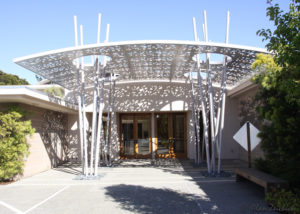 This is one of a series of articles I wrote for the monthly Bulletin of Peninsula Temple Sholom in Burlingame, Calif.
This is one of a series of articles I wrote for the monthly Bulletin of Peninsula Temple Sholom in Burlingame, Calif.
Dear Parents of the Children in Preschool and Religious School,
Welcome to the beginning of a new year of exciting education at Peninsula Temple Sholom. Thank you for entrusting the Jewish education of your beloved children to our dedicated teachers – and for making the commitment to bring up your children to live Jewishly.
What an adventure you and your children are about to begin. Soon you will experience the first-day jitters, get to know the teachers and curriculum… and before you know it, you will be scheduling the 2013 Preschool summer program or making plans for Camp Newman!
For those of you with older school-age children, we know it’s a constant struggle to strike the right balance between Sunday classes and other youth activities. As the saying goes, “Been there, done that!” It’s not easy. We honor your perseverance and respect your compromises. PTS’ clergy, teachers, and lay leaders take our responsibilities to your children seriously. We promise to provide your kids with a rich environment, lots of opportunity to make friends and connections, and plant the seeds of life-long Jewish learning.
We also take our responsibility to you seriously – both as a parent and also as an adult member of this congregation. Judaism is about more than providing an education for our children, and your role here is more than Preschool Parent or Religious School Parent. Dive into the pool of Judaism and swim in the sea of Torah. Look beyond the schools and parents groups to immerse yourself in everything that PTS represents! Take adult education classes. Roll up your sleeves in Social Action activities. Make friends in Sholom Women and Brotherhood. Celebrate and seek comfort with your fellow congregants in times of joy and sadness.
Yes, it’s difficult to juggle the demands of home, work, travel, school, and family. Going to the Temple for anything beyond school might seem impossible at this time in your life. Trust me, we all know the challenge of finding a babysitter, or even carving out a few moments of peace and quiet after a stressful day. Still, as much as you can, we hope you will embrace your PTS community to enrich your own Jewish life, and nourish your own Jewish soul.
Let me also invite you to come to Shabbat worship — and bring your school-age children to services beyond their class’ family service. Judaism comes alive at Shabbat services, and exposing your kids to regular Family Services, Hava Nashira, and Kabbalat Shabbat services continues their Jewish journey far beyond the classroom.
The sanctuary, more than the classroom, is where your kids will become comfortable and familiar with our liturgy’s prayers and sacred music. The sanctuary is where young people become inspired by their clergy and get to know their fellow congregants of all generations. The sanctuary is where they experience the sacred beauty of Shabbat and the special feeling of holidays and festivals as part of a community.
The Shabbat sanctuary is where your children will discover that the synagogue is their spiritual home.
Thank you for committing to your children’s Jewish education through the PTS Preschool and Religious School – and for belonging to our congregation. Have a wonderful year!




 Among the most peevish of my pet peeves are email messages that have no subject line. Why do people send them?
Among the most peevish of my pet peeves are email messages that have no subject line. Why do people send them? I am consistently amazed at how comfortable my Steelcase Think office chair is.
I am consistently amazed at how comfortable my Steelcase Think office chair is.